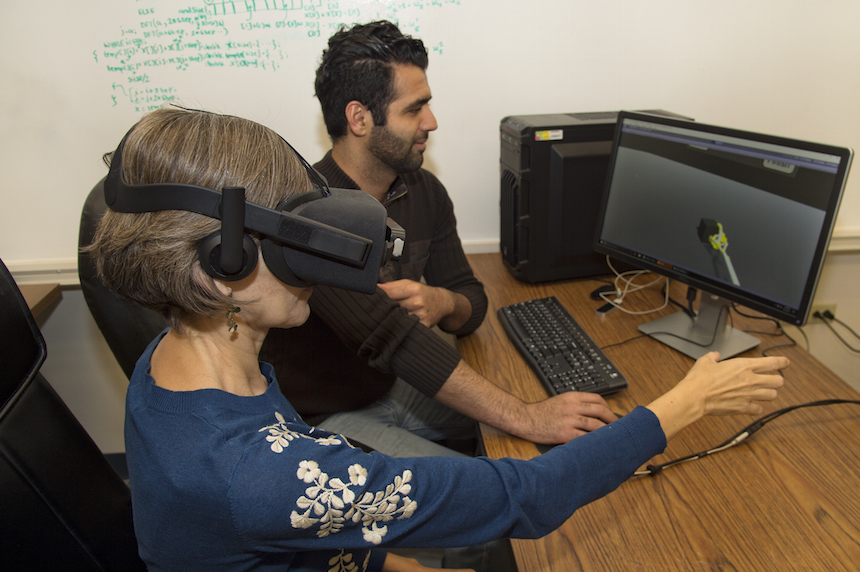ISU students create virtual reality system that could help rehabilitation for stroke victims
Published at
The following is a news release from Idaho State University.
POCATELLO — Idaho State University mechanical engineering and physical therapy faculty and graduate students have teamed up to create a virtual reality system that will potentially assist with arm rehabilitation for people who have suffered from strokes.
“We have accomplished half of the work, which is creating the engineering systems to test this work and now we have to develop the protocol for using it for rehabilitation to see how well it works,” said Alba Perez-Gracia, ISU chair and associate professor of mechanical engineering, and a lead researcher on the project.
The ISU researchers, who are working on this collaborative project with Texas A&M and California State University, Fullerton, first mapped arm motions and digitalized them and then have created a virtual world where people wearing a portable virtual-reality device can use the system as a therapeutic intervention. The researchers will soon be testing the new tool with human subjects.
Subjects wear a virtual reality headset and use it to complete tasks created for the virtual world. The virtual reality system picks up the actual movements of their own arm and displays it as a cartoon figure within the virtual world. The subject may then participate in the virtual world task that include picking up balls and throwing them at a target or stacking cubes using their right or left hand. In addition, the system has been developed to reflect the image of the arm being used.
For example, if a person is using the right arm to complete the task, the virtual reality system reflects the image so that the cartoon arm actions being portrayed look as if it is the left arm performing the task. This reflected image of arm function has the potential to be used as a therapeutic intervention because previous research has shown that observing an action activates the same area of the brain as performing the action.
“It is called the mirror neuron system,” said Nancy Devine, associate dean of the ISU School of Rehabilitation and Communications Sciences, who is a co-researcher on the project. “When you observe body movements, the cells in the brain that would produce that movement are active even though that arm isn’t being used.”
She said if you just look at brain activity, in some areas of the brain you can’t distinguish an active movement from an observed movement.
“So, if you take someone who has had a stroke and can’t use one arm, you can take their arm that is still working and reflect it to the other arm by putting them in this engaging virtual environment and we can be providing an exercise that is effective in helping rehabilitate the damaged areas,” Devine added.
Although the work on this specific project ends at the end of the academic year, ISU’s work on this type of project may continue.
“We have created the portable virtual-reality device that the patient can wear, which projects the motion happening for the patients,” Perez-Gracia said. “We hope it will be a starting point for future projects on using virtual reality and robotics for helping in rehabilitation and training of human motion.”
This research has been taking place at the ISU Robotics Laboratory and the Bioengineering laboratory at the Engineering Research Complex. On this project, Perez-Gracia and Devine have been working with the third researcher of the team, Marco P. Schoen, professor of mechanical engineering, Omid Heidari, a doctoral student in mechanical engineering, master of science students A.J. Alriyadh, Asib Mahmud, Vahid Pourgharibshahi and John Roylance, and undergraduate students Dillan Hoy, Madhuri Aryal and Merat Rezai. Eydie Kendall, assistant professor of physical and occupational therapy, also collaborated on the project.
“We have very good equipment here that we can do experiments with and that is very appealing,” said Heidari, who said the laboratory has become his second home. “Instead of just writing code on computers and stuff, we are actually doing something here that is very practical and very interesting. We did the motion capture, the kinematic part, and now we are working on finishing the virtual reality part of the project. We are getting closer to having a good model of what we want.”




